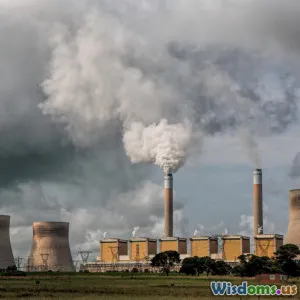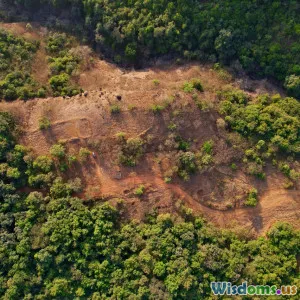
Denim Done Right A Data Driven Look at Eco Friendly Jeans Production
8 min read Explore how data-driven methods revolutionize eco-friendly jeans production to reduce environmental impact and set new industry standards. (0 Reviews)
Denim Done Right: A Data-Driven Look at Eco-Friendly Jeans Production
Denim has long been the go-to fabric staple for casual wear across the world, symbolizing rugged durability and timeless fashion. Yet behind every blue jean lies a substantial environmental footprint—raising questions about how we can reconcile style with sustainability. What if data and technology could make the production of denim radically eco-friendly? This article peels back the layers on the denim lifecycle, spotlighting innovations, statistics, and actionable solutions making the industry more sustainable than ever before.
The Enormous Environmental Toll of Denim
Traditional denim manufacturing is a high-impact process. For example, growing conventional cotton—the primary raw material—requires roughly 20,000 liters of water per kilogram, enough to produce one pair of jeans. Furthermore, according to the Ellen MacArthur Foundation, the dyeing and finishing stages contribute to around 17-20% of the industry’s water pollution globally, releasing hazardous chemicals into waterways.
Carbon emissions also pile up: a single pair of jeans typically results in approximately 33.4 kg CO2 equivalents, comparable to driving a car over 80 miles. Adding to that, waste from scraps and short-lived garments ends at landfills, amplifying microplastic pollution.
These statistics showcase how denim’s traditional lifecycle stresses ecosystems and calls for urgent innovation.
Harnessing Data Analytics to Spotlight Problem Areas
The foundation for a more sustainable denim industry lies in precise measurement and data analytics. Companies like Levi’s and Patagonia deploy lifecycle assessments (LCAs) to evaluate environmental impacts comprehensively — from cotton fields to garment disposal.
Example: Levi Strauss & Co.’s “Water<Less” program uses detailed water consumption analytics across dyeing and finishing processes. Since 2011, this initiative has reduced water use by over 3 billion liters, roughly saving 1,200 Olympic-sized swimming pools worth of water.
Data-driven tools enable manufacturers to identify "hot spots" in the production chain that disproportionately affect resource use. These insights help in targeting process redesign, material substitution, and waste minimization.
Innovative Eco-Friendly Practices Backed by Data
Water-Saving Dyeing Technologies
Technologies like foam dyeing, air dyeing, and laser finishing harness data on water and chemical usage to deliver sustainable alternatives.
-
Foam Dyeing: Unlike traditional methods requiring up to 150 liters of water per kilogram of fabric, foam dyeing uses about 1/10th the amount, dramatically lowering water footprint.
-
Laser Technology: Brands such as Diesel use laser machines guided by precision data to create distressed denim effects without any abrasive chemicals or water use.
Organic and Regenerative Cotton
Organic cotton, grown without synthetic fertilizers or pesticides, reduces chemical runoff into waterways. Data shows organic crops use 91% less water and 62% less energy than conventional cotton.
Regenerative agriculture goes even further by restoring soil health and sequestering carbon. For instance, Levi's introduced regenerative cotton in 2021, aiming to scale it up to 50% of their supply by 2025. Studies estimate such farming could reduce carbon emissions by up to 1.2 billion tons annually if widely adopted.
Recycled Denim and Circular Fashion Models
Data from the Textile Exchange reports that recycled cotton manufacturing emits up to 45% less CO2 than virgin cotton production. Brands incorporating certified recycled fibers are building circular ecosystems—such as take-back programs where consumers return worn jeans for recycling.
Example: Madewell’s “Jeans for Days” program reuses fibers to create new fabric, minimizing landfill dependency. Data-driven sorting and fiber quality assessments optimize recycling efficacy, making circular denim increasingly viable.
Chemical Management and Green Chemistry
Opting for non-toxic dyes and replacing harmful chemicals with biodegradable alternatives reduces both environmental and health risks.
Companies use analytical data to monitor effluents and implement closed-loop chemical systems. For example, Jeanologia’s patented Ozone technology uses ozone for bleaching, which cuts water consumption by 90%, energy use by 50%, and eliminates dangerous effluents.
Industry Leaders Championing Data-Driven Sustainability
Some market leaders exemplify how data analytics integrates with sustainability goals:
-
Levi Strauss & Co.: Employs Life Cycle Assessment data for transparency and commits to sourcing 100% sustainable cotton by 2025.
-
Patagonia: Publishes detailed impact reports and champions regenerative organic cotton.
-
Levi’s Water<Less Program: Saved over 3 billion liters of water through process innovation.
-
Wrangler's recycling initiatives: Showcase how integrating data on fabric recovery rates can drive circular approaches.
Challenges and the Road Ahead
While progress is substantial, hurdles remain. Data collection across globally distributed supply chains can be inconsistent, impeding transparency. Additionally, cost implications for emerging technologies can obstruct widespread adoption.
To overcome these, push for standardized data reporting, policy incentives, and consumer education will be vital. The future likely holds blended approaches combining innovation in materials science, AI-powered process optimization, and collaborative circular economy models.
Conclusion: Data Paving the Way Toward Denim That Cares
Denim embodies more than fashion—it reflects our footprint on the environment. Thankfully, data-driven approaches provide clarity on where impacts are highest, fueling innovations that dramatically reduce water use, lower carbon emissions, and minimize waste.
As consumers increasingly value eco-conscious practices, the market momentum for greener denim grows. Stakeholders from farmers to manufacturers and retailers must harness data insights to implement best practices effectively.
The result promises a fashion future where your favorite jeans don’t just look good—they do good, too.
For those eager to drive change, supporting brands with transparent sustainability data and demanding eco-friendly innovations can transform the industry from within. Denim done right is not a distant dream, but a tangible reality shaped powerfully by data.
Rate the Post
User Reviews
Popular Posts




















